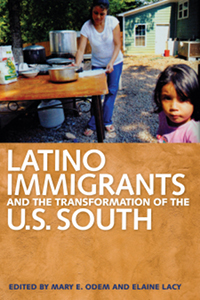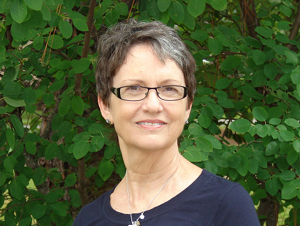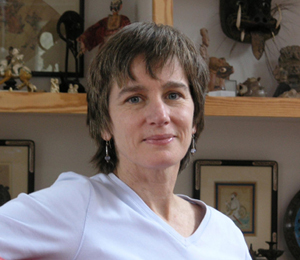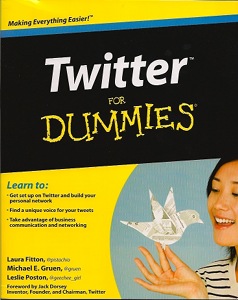Posted by Elena del Valle on August 31, 2009

Lee Maicon, VP, Wing
Photo, video: Wing
Everybody needs clean laundry, right? Even unattached Spanish speaking Latino men have to wash their clothes sometime. With that market in mind, the makers of Downy Ultra laundry detergent and Wing, the company’s Spanish language ad agency for Downy, recently produced Lavadero (Laundry), a new 30 second Spanish language ad. Scroll down to watch the Spanish language ad.
Forty people representing Wing dedicated an undisclosed budget and one day to film the commercial in Buenos Aires, Argentina. The goal for the project was to find a new and interesting way to communicate Downy’s equity and long lasting scent.
“In a world where people have many options and are highly distracted in their media habits, even successful premium brands like Downy need to be innovative. The Lavadero spot is a great example of how a premium brand in a high consumer involvement category sought out a different way to communicate what makes the product special,” said Lee Maicon, vice president and head of Strategy at Wing. “By casting men and incorporating humor, we were able to take a category that is very often taken too seriously and made it much more relatable to the average consumer.”
In addition to Maicon, the following individuals and companies worked on the ad production: Gustavo Asman, John Castrillón, Nadina Steimberg, Ana Franco, Verónica Paz, Mari Provi Florez, America Filmworks, Sebastián Orgambide, Alejandro Giuliani, Marcia Jaes, Mariano Antonietti, Red Car, Juan Pablo Cadaveira, Francess Tom-Sahr, Mixology Lab, and Luis F. Herrera.
The spots began airing last month on Telemundo, LATV and KMPX (Dallas). Wing is a Hispanic marketing communications agency.
Comments:
Filed Under: Video
Posted by Elena del Valle on August 28, 2009

Latino Immigrants and the Transformation of the U.S. South
Photos: University of Georgia Press
In the past decade the Latino population in the South has doubled bringing with it social, economic and cultural changes. In 2004, a conference on Mexican immigration to the southern part of the United States was held in Atlanta, Georgia with the help of the Consulate of Mexico in Atlanta and four universities. The edited conference proceedings were published initially by the Institute of Mexico in Atlanta. The editors, Elaine Lacy and Mary E. Odem, expanded the topic to encompass Latin American immigration to the United States South and this year published a collection of articles by 10 contributors in a book titled Latino Immigrants and the Transformation of the U.S. South (University of Georgia Press, $24.95).

Elaine Lacy, co-editor, Latino Immigrants and the Transformation of the U.S. South
In the book, ten academics, five women and five men from the United States and Mexico, dedicated 175 pages to an examination of issues relating to Latinos and the South. Latino Immigrants and the Transformation of the U.S. South is divided into nine chapters: Cultural Enclaves and Transnational Ties: Mexican Immigration and Settlement in South Carolina by Lacy; New Scenarios of Migration: Social Vulnerability of Undocumented Veracruzanos in the Southern United States by Rosío Córdova Plaza; The Dalton Story: Mexican Immigration and Social Transformation in the Carpet Capital of the World by Víctor Zúñiga and Rubén Hernández León; Globalization and Latin American Immigration in Alabama by Raymond A. Mohl; Hispanic New Comers to North Carolina: Demographic Characteristics and Economic Impact by James H. Johnson Jr. and John D. Kasarda; Race, Migration and Labor Control: Neoliberal Challenges to Organizing Mississippi’s Poultry Workers by Angela C. Stuesse; Latino Immigrants and the Politics of Space in Atlanta by Odem; New Americans in a New South City? Immigrants and Refugee Politics in Nashville, Tennessee by Jamie Winders; and Popular Attitudes and Public Policies: Southern Responses to Latino Immigration by Lacy and Odem.

Mary Odem, co-editor, Latino Immigrants and the Transformation of the U.S. South
Lacy is professor of history and assistant to the executive vice chancellor at the University of South Carolina, Aiken. She has published several articles on Latino immigration to the United States and Mexican cultural politics. Odem is associate professor of history and women’s studies at Emory University and the author of a number of publications about women, gender, immigration and ethnicity in the history of the United States.

Click here to buy Latino Immigrants and the Transformation of the U.S. South
Comments:
Filed Under: Books
Posted by Elena del Valle on August 26, 2009

Wedding bands
Photo: Webphotomart.com
Over time just over half of the United States residents gets married. In the last decade the number of people who never wed dropped from a third to slightly more than a quarter. What, if any, impact does the recession have on lovebirds wishing to get hitched?
Most couples marry between the ages of 18 and 29 although they generally have not reached their peak salaries. Perhaps that is why it is common for parents to provide financial support for young couples’ wedding events and honeymoon travel. Looking at all newly married couples the average income is $55,000 according to wedding industry data gatherers. At the same time, the median wedding in past years cost $28,000. It seems likely some couples are spending much more than others, and also that the recession is denting the depth and breath of wedding plans for many of the five million people that will likely be seeking wedded bliss this year.
According to sellmoreweddings.com, the average wedding budget is $20,000 but the median cost is $28,000. Not surprisingly, couples marrying in major metropolitan areas such as Boston, Chicago or New York City pay more to say I do.
In the United States June is the most popular moth to marry, followed by August, September and October. In past years, there were 175 invited guests on average per wedding. Since only about half of couples rely on wedding planners we may be able to conclude that the remaining couples manage the event on their own or with the help of friends and relatives. When money is tight, like now, fewer couples take advantage of consultants.
According to sellmoreweddings.com, couples are waiting longer to get married so the engagement period may be longer. According to a recent Mintel focus group presentation and video, most of their focus group participants were making their own plans in an effort to save money and be creative; some were using consultants but only in a limited capacity. The findings are based on qualitative focus group research by Mintel, a supplier of consumer, media and market research, from April-May 2009.
“Seven out of 10 couples we talked to are planning their weddings with cautionary measures due to the economy,” said Kat Fay, senior analyst at Mintel. “However, despite revised plans and cutbacks, couples still feel certain their wedding days will be memorable without portraying a sense of being scaled down.”
Mintel researchers found couples are eager to economize by holding the gathering at a more modest place and with more affordable options than they would like. They emphasized savings on items like flowers, food and liquor, while seeking the best enjoyment and comfort of their guests. Some respondents also reduced the number of guests invited while still including close family and friends.
Although they consider honeymoons important they look closely at costs and ways of keeping them down by choosing nearer destinations that are affordable. While brides still place much value on their dress they seek affordable options and dresses on sale. They still allocate funds to beauty salon help with hair and makeup so the wedding pictures come out nice.
What about the ring? Rings are considered non negotiable by many focus group respondents. According to TheWeddingReport.com, in 2008, couples were expected to spend $6.1 billion on engagement rings in the United States. They were expected to shell out $2 billion more on wedding rings for brides and grooms. The same report indicates couples’ favorite month to become engaged is December, and Saturday is the most popular day to ask the question.
The result so far is an increase in informal and intimate events, even humor, among those willing to discuss their weddings. And, social networking sites were identified as a growing source of information for future brides.
While no ethnic specific information was gathered from the small Mintel study or cited by other online sources, it may be safe to conclude that emerging markets such as Latinos are well represented among wedding planners. Since those markets skew young and favor traditional family lifestyles they are likely to be overrepresented among those planning to wed.
Posted by Elena del Valle on August 24, 2009

Humane Society of Greater Miami Alley PSA campaign
Photos, video: Accentmarketing
There are 1.3 million cats and dogs in Miami-Dade County. While animal abuse and abandonment have been a problem for many years, with the recession and foreclosure glut the number of abandoned animals in that city has tripled, according to the Humane Society of Greater Miami. Organization representatives indicate that pet owners often don’t realize the implications of allowing their pets to breed, and the accompanying responsibility of finding homes for the whole litter.
In the hope of bringing attention to these issues, the Humane Society of Greater Miami with the support of Accentmarketing, unveiled a new $100,000 (estimated costs of production) Spanish language public service advertisement (PSA) campaign with Alley, a TV spot, and Studio Shot, a print ad. A radio ad is planned for release next month. They plan to distribute the ads to local Spanish language media. Scroll down to watch the video ad.
The TV ad features a lone baby dressed in a kitten costume crawling on the ground in a dark alley while a voice over discusses pet abandonment and sterilization issues on behalf of the Humane Society of Greater Miami Adopt-A-Pet program. As the camera pans out, viewers are meant to see that the baby represents an abandoned kitten, sitting by himself in a dirty and empty alley, lost and bewildered.
The spot creators want viewers to understand that just like babies, pets are part of their family. They want pet owners to realize that it’s their responsibility to spay and neuter their pets to help reduce the animal overpopulation problem in Miami-Dade County. To do that the Accentmarketing team focused on creating a strong correlation between how sterilizing a pet can result in saving thousands of animals from ending up homeless on the street or in a shelter.

Ana Maria Montero, account group director, Accentmarketing
“In this day and age where we see such unjust animal cruelty in our community, the Accentmarketing team felt passionate about instilling responsibility among current and future pet owners to spay and neuter their pets,” said Ana Maria Montero, account group director, Accentmarketing in a press release. “We are proud to be able to support the Humane Society of Greater Miami’s mission and contribute towards inspiring pet owners in our community to be more responsible for their pets.”
Studio Shot is a print interpretation of the Alley TV spot. The image of the baby wearing the kitten costume looks like a professional baby studio portrait. The headline reads: “Tu mascota es como un hijo. Sus crías también deberían serlo” (Spanish for Your pet is like your child. Their offspring should be as well.). The goal is to make pet owners see the baby like a pet, one of thousands of abandoned pets in the streets as a result of unsterilized pets. Most of those abandoned pets are likely to die, according to the organization.
The TV spot and print ad were shot in Los Angeles, where the Production House, D’Avant-Garde is located. Although the TV spot was shot in one day, pre-production and post-production of the TV and print ads required two months.
Twenty people donated their services pro bono to the Humane Society Spanish language PSA campaign. The Accentmarketing team members that led the campaign were: Luis Puerta, creative director and copywriter; Junior Jimenez, senior art director; Rudy Leschhorn, executive producer; and Ana Maria Montero. The following also supported the project: Pascui Rivas and Francisco Pugliese, media directors at D’Avant-Garde, Tom Marvel as director of photography, Guillermo Sauceda for the voice over, and digital retouching by Artistic Image.
The Humane Society of Greater Miami Adopt-A-Pet is a limited admit, adoption guarantee facility, dedicated to placing every dog and cat in their care into a loving home, and promoting responsible pet ownership and spay/neuter programs. Animals admitted into their shelter are safe from euthanasia for as long as it takes to find someone to adopt them. The organization houses 250 pets on a daily basis and spays or neuters 12,000 animals a year in its two clinics.
Established in 1994, Accentmarketing is a Hispanic marketing communications agency with offices in Miami, Los Angeles and Detroit. Clients include the American Heart Association, Farmers Insurance, GobiernoUSA.gov, Chevrolet, the California Association of Realtors, Kaiser Permanente, Brown-Forman and the U.S. Navy.
Posted by Elena del Valle on August 21, 2009

Twitter for Dummies book cover
As social media grow in popularity (see Which social networking site is right for you? and Businessmen outline social media basics) more people and businesses seem to join the Twitter ranks (see About Twitter and About Twitter II). Twitter offers easy to use social networking opportunities with postings limited to 140-characters. For aspiring Twitter users, the well known For Dummies series released a new 267-page paperback book published in 2009, Twitter For Dummies (Wiley Publishing, $21.99). Three people collaborated to make the book come to fruition, Laura Fitton, Michael E. Gruen and Leslie Poston.
Twitter For Dummies starts out with a foreword from Jack Dorsey, founder and chairman of Twitter, and a Cheat Sheet with do’s and don’ts, access points and shorthand commands. Dorsey mentions that Twitter is based on three concepts: “minimize thinking around communication, expose trends in local and global circles, and spark interaction.” The book is divided into five parts of between three and four chapters each: Twitter? Like Birds Do?, Joining Your Flock on Twitter, Twittering in High Gear, Knowing Why We Twitter, and The Part of Tens.
It was written for people wanting to start a Twitter account to build their network of contacts, locate similar minded people interested in following their brief Twitter postings, and leverage the social media site for business communication and networking. It also addresses Twitter terms, how to Twitter when you are not at your office or home, third party applications, and Twitter character use and meaning.
Fitton is a business consultant, blogger and Twitter fan with a following of more than 32,000 when the book was published. Gruen is a business adviser and chief financial officer and chief operating officer of Nom, a digital strategy agency. He is also the chief executive officer of a healtcare startup. Poston dedicates her time to social networking, new media, branding and business development. She has more than 200 books to her credit.

Click here to buy Twitter For Dummies
Comments:
Filed Under: Books
Posted by Elena del Valle on August 19, 2009

There was an increase in ethnic procedures
Photo, video: American Society of Plastic Surgeons
According to a recently released report from the American Society of Plastic Surgeons (ASPS), between 2007 and 2008 there was an increase in plastic surgery procedures among all groups except “Caucasians” (we assume that refers to non Hispanic whites since they list Hispanics separately and Hispanics can be of any race). While there was a 2 percent decrease among non Hispanic whites, there were 3 million ethnic procedures representing an 18 percent increase among Hispanics, a 10 percent increase among African Americans and a 5 percent increase among Asians. It is likely this increase parallels national demographic changes and the overall growth in ethnic markets. Scroll down to watch an ASPS video on the subject.
“We’re seeing a rise in Hispanics opting for cosmetic procedures that coincides with the growth we’re seeing in the nation’s population,” said John Canady, MD, president, ASPS in a press release. “Less social stigma, as well as, advances in procedures allow patients to maintain their ethnic look. While the majority of patients continue to be Caucasian, the profile of the typical patient is changing.”
The report indicates 91 percent of all procedures were performed on women. Overall, cosmetic procedures, especially minimally invasive and less expensive options, increased 3 percent. There were 11 million cosmetic procedures performed during that time period. Surgeries increased among women 30 years old and older although there was a greater increase among women 40 and older. Fewer young women opted for surgery than in the previous year.
There was a noticeable increase in minimally invasive procedures like laser skin resurfacing, Botox and laser treatment of leg veins, and a decrease in invasive procedures like liposuction, Tummy Tucks, breast augmentation and face lifts. At the same time, there was an increase in reconstructive procedures such as breast, birth defect and hand reconstructions.
Some analysts believe these changes are due to the economic recession. As fewer patients opt for cosmetic procedures more doctors offer reconstructive procedures to make up the difference in income. In the past they may have been less willing to accept or pursue reconstructive procedures because of the extra insurance paperwork and added inconvenience.
There were increases in procedures performed in an office (rather than a clinic or hospital). Also more patients chose to have several procedures performed in one visit and return to the same doctor. The Pacific Mountain area had the greatest number of procedures, 3.5 million.
To produce the report and ensure objectivity in the gathering, analysis and publication of its procedural statistics, ASPS partnered with Data Harbor Solutions, a health care industry data management and technology development company. As part of the process researchers aggregated and extrapolated the results to the entire population of more than 24,000 physicians most likely to perform cosmetic and reconstructive plastic surgery procedures.
Comments:
Filed Under: Video
Posted by Elena del Valle on August 17, 2009

TheLatinProducts.com homepage - click to enlarge
Photos: TheLatinProducts.com
For homesick Latinos Georgia based TheLatinProducts.com website offers a little relief. Among its 1,800 product offerings the online supplier sells ethnic foods, cleaning products and spices some of which remind customers of their home country or the country of their heritage. Buyers are regular consumers, chefs, Latin restaurants, and small to medium size Latino grocery stores. The portal sells 300 Hispanic market oriented products from Mexico, Guatemala, Colombia, United States and Venezuela.
TheLatinProducts.com was founded in Acworth, Georgia by Francisco Tovar, a Venezuelan who immigrated to the United States in 1997. The average customer is between 25 and 45 years of age and earns $40,000 a year or more. Sixty-five percent of the customers are women. One quarter of buyers are on the West Coast, 40 percent on the East Coast; 15 percent in the South and the remainder, 20 percent, in the central and mountain areas. What are the three most popular products? Maseca, Goya products and spicy sauces. Well known product lines available on the portal are La Costena, Jumex, Nestle, D’Gari, Maseca, La Preferida, Dona Maria and Gamesa.

Francisco Tovar, owner, TheLatinProducts.com
“TheLatinProducts.com provides the lowest price guaranteed online of Mexican food and Latin food. This exceptional concept is available at one user online friendly location, offering secure shopping, complemented by rapid and reliable delivery services directly to any home, office, business or military base,” said Tovar by email when asked about his business.
He promotes TheLatinProducts.com on major search engines and with public relations strategies. From August to September 4 the portal will be offering 10 percent off all of its item for customers who use Coupon Code augsep409.
Tovar came to the United States to study in 1997 and graduated in 2002 with a Bachelor of Science in Information Systems, Cum Laude, from Mercer University in Atlanta, Georgia. Prior to launching the portal he worked in real estate.
He dedicated a year to conducting research looking at major brands, distributors, terms and conditions before relying on his technical background to establish Tovar Investments LLC, the company that owns the portal. This year, he opened the online store which has more than 200 customers including restaurants and Latin stores throughout the United States and a few clients in Europe. He figures the main reason his customers shop at the virtual store is to save time and money.
Reach Hispanics online today with
“Marketing to Hispanics Online” audio recording
Identifying and characterizing the booming Hispanic online market



Joel Bary, Alex Carvallo and Matias Perel
Find out about
• The 16 million Latino online users
• Latino online users by gender
• What they do online
• Their language preferences
• How to reach Hispanic urban youth online
• What affects their online behavior
• What influences their purchases
Click here for information about “Marketing to Hispanics Online”
Posted by Elena del Valle on August 14, 2009

Mexican journalist Alfonso “Poncho de Anda”
Photo: Victor Rodriguez
Beginning August 17, 2009 Mega TV will launch Los Implicados, a late night “infotainment” show which, according to promotional materials, combines entertainment, news and top personalities. The program will be hosted initially by journalists Alfonso “Poncho de Anda” and Camilo Egaña. Los Implicados is scheduled to air Monday through Friday at 10 p.m. (EST), 11 p.m. (PT). Producers plan to draw viewers with text messages, the Internet and cell phone technologies.
“I’m very excited to be part of Los Implicados,” said Poncho de Anda in a press release. “It’s a modern, fresh and innovative show that is a unique alternative to other Hispanic programs. Los Implicados is bringing a completely new and different approach to helping our viewers get up to date news and information and we are very eager for our debut on August 17. I’m also looking forward to announcing my new co-host in the coming weeks!”
“Poncho de Anda is a great talent with a very modern style,” said Cynthia Hudson Fernandez, chief creative officer and executive vice president, SBS and managing director, Mega TV. We are confident that Los Implicados will have a tremendous and long lasting impact on our audience.”
De Anda, “Poncho” as many know him, started his career in Mexico in 1997 with group Radio Centro as a DJ in Alfa 91.3FM, in Mexico City. At 91.3 he also worked as producer and host of his own shows. As a DJ, he also hosted Alfa’s Top Ten and the news segment Alfa Entertainment News. That same year, he started working for Mexican TV as part of Alfa Dance, a TV Azteca music video show. In 1999, he became host of Estudio 7, a youth magazine show.
In 2001, he became the main anchor on Fuzion, an entertainment news show on MUN2 television. In 2002, he became part of Telemundo – NBC where he worked for six years as co-host of the morning show De Mañanita and Nuevas Voces de America. He also participated in specials at Telemundo including, Miss Universe, The Billboard Latin Music Awards, and the Macy’s Thanksgiving Day Parade.

Camilo Egaña, co-host, Los Implicados
Egaña began his career in his early twenties in Cuba writing for several publications and entertaining on radio as an on air personality for the show El Sonido de la Ciudad. He took time off to study radio and television in Madrid, before returning to television as the host of La Noche Se Mueve and Decida Usted, a reality program.
In 1996, Egaña arrived in Miami where he worked as a reporter and media consultant. He also worked for the United Nations Children’s Fund (UNICEFz0, press and publicity agencies, as an actor and master of ceremonies for different events.
“Camilo has been transcending stereotypes with his irreverent and original style throughout his entire career and that is one of the reasons we see him as the perfect fit to co-host our new, unique Mega TV show,” said Hudson Fernandez. “I’m confident that Camilo, with his expertise will captivate our audience who are constantly searching for good interviews and more.”
Los Implicados will be available on Mega TV channel 22, channel 57 in West Palm Beach, channel 32 in Las Vegas, channel 169 on de DirecTV in Puerto Rico, channel 30 in Puerto Rico, channel 38.2 in Orlando, channel 36.2 in Tampa, Florida, and channel 405 on DirecTV Más in the rest of the United States.
Spanish Broadcasting System, Inc. is one of the largest publicly traded Hispanic-controlled media and entertainment companies in the United States. SBS owns and operates 20 radio stations located in Hispanic markets such as New York, Los Angeles, Miami, Chicago, San Francisco and Puerto Rico. The Company also owns and operates Mega TV in Miami.
Make Latinos loyal to your brand
Listen to Author Isabel Valdes in
“Hispanics Customers for Life” audio recording

Isabel Valdes gives a presentation and participates in an extended Q&A discussion about
• Immigrants adaptation to their new country, culture
• Latino cultural values and their role
• Case studies, insights on Latinos as long term customers
• Acculturation
• Latinos and how they adapt to their host country
• Adaptation, assimilation
• Difference between assimilation and acculturation
Click here for information on Hispanic Customers for Life audio recording
Comments:
Filed Under: Media
Posted by Elena del Valle on August 12, 2009
By Ashley Wirthlin
Author and editor, PublicRelationsBlogger.com

Ashley Wirthlin, author and editor, PublicRelationsBlogger.com
Photo: Ashley Wirthlin
Finding a job may seem like a tough feat in times like these. However, there are still people being hired. There are things that can be done to help ensure that you too are one of those people getting a job. There takes a great deal of effort, desire to work, and common sense in order to get ahead, so use your smarts, and be proactive!
Below are some things I found helpful when getting hired. Underneath all of the business and professional aspects I had attempted to polish (with my small amount of experience) were a good mentality, perseverance, and dedication to finding a position suitable for me. Though finding a position is important, it is equally important to find a company that you enjoy working for and that you are a good candidate for.
Click here to read the complete article
Posted by Elena del Valle on August 10, 2009

Actress Ana de la Reguera
Photo, videos: Procter & Gamble
Procter & Gamble recently hired Ana de la Reguera, a Mexican actress, to promote its Pantene Pro-V line with a new Spanish language ad campaign that appeared in Hispanic magazines, TV stations and websites across the United States in June 2009. Company representatives declined to share details about the campaign in spite of several email and phone requests. Scroll down to watch the ad and a behind the scenes interview with de la Reguera.
“We feel honored that Pantene has received more awards than leading salon brands,” said Carolina Varela, brand manager for Pantene. “Her stunning beauty, gorgeous hair and easy spirit make her an ideal addition to the Pantene family of spokesmodels.”
“My work demands constant hair brushing, combing and styling. For a fraction of the cost of expensive salon brands, Pantene keeps it healthy,” De la Reguera was quoted in a press release.
De la Reguera, voted one of the 50 Most Beautiful by People en Espanol magazine, made her Hollywood debut in a 2006 movie. P&G Beauty products include 100 brands available in nearly 130 countries. The cosmetics giant had sales of more than $22 billion in fiscal year 2006/07, making it a leading global beauty company. P&G Beauty brands include Pantene, Olay, Head and Shoulders, Max Factor, Cover Girl, DDF, Sassoon Professional, Wellaflex, Rejoice, Sebastian Professional, Herbal Essences, Koleston, Clairol Professional.
Click on the play button to watch the Pantene Spanish language ad and behind the scenes video below
Comments:
Filed Under: Video





























